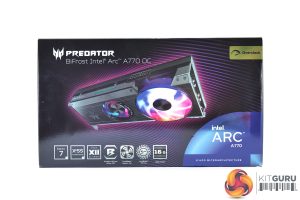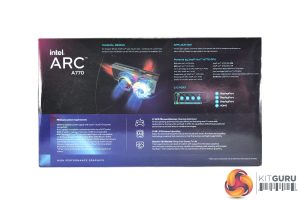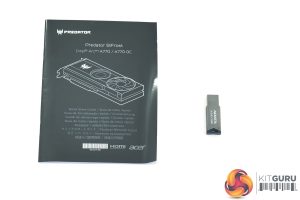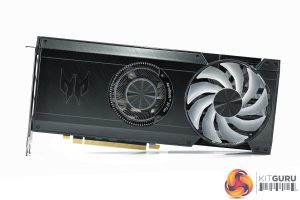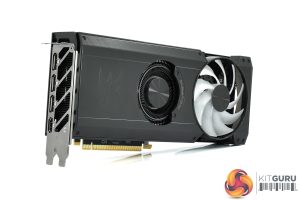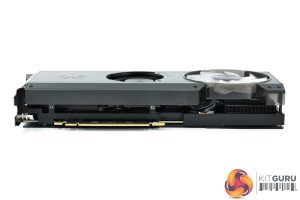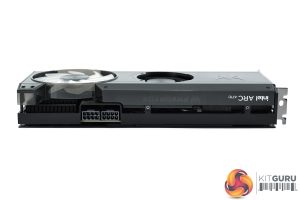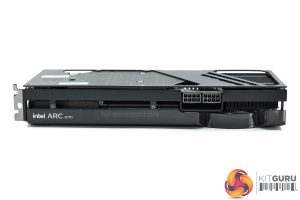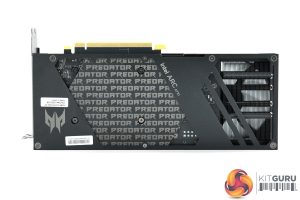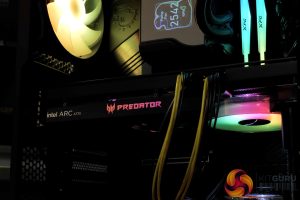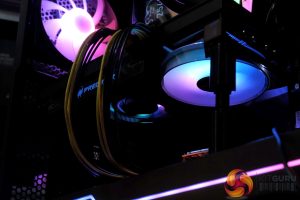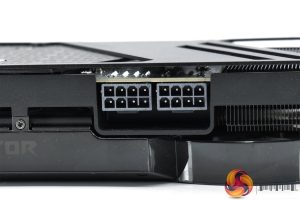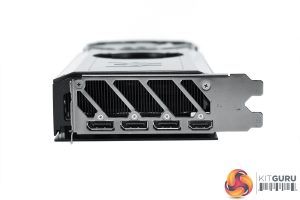The Acer Predator BiFrost A770 ships in a compact box, with an image of the graphics card positioned front and centre. On the back, the company highlights a couple of key features around the cooler design, as well as the I/O and software application used to tweak RGB lighting and fan control.
Inside the box, a quick start guide is included, as well as a 32GB USB stick that includes a driver and install files for the BiFrost software application.
As for the card itself, you've likely already seen the design online over the past few months but it is safe to say the BiFrost is rather unconventional with its approach. It uses a hybrid design, with one 70mm blower-style fan, and one 90mm axial fan, all housed in a brushed metal shroud. It's certainly not a cooling setup we have seen before so it'll be interesting to see how the cooler performs later in this article.
The BiFrost is reassuringly well-built however – we already mentioned the metal shroud which adds a premium feel, though the aesthetics may not be for everyone!
The card is also relatively compact by modern standards, measuring 267mm x 117.8mm, and is a standard dual-slot thickness. It weighs in at 1.16 Kg on my scales, making it barely any heavier than Intel's own Limited Edition model.
The front side of the card is home to both the Intel Arc logo and the Predator logo, the latter of which is illuminated by RGB LEDs when the system is powered on. We also find a metal backplate, with a large section of repeating text in the middle – if you didn't know this was a Predator card already, you sure do now! There's also a few cut-outs in the backplate at the end to allow airflow to pass directly though the heatsink.
Speaking of RGB, above we can see the three different zones in action – the Predator logo, the blower fan, and then the axial fan. It's certainly a clean-looking implementation and it offers extensive customisation options via the BiFrost software application.
Power requirements consist of 2x 8pin connectors. For reference, the Limited Edition model requires 1x 8-pin and 1x 6-pin. We also find 3x DisplayPort 2.0 video outputs, and 1x HDMI 2.
 KitGuru KitGuru.net – Tech News | Hardware News | Hardware Reviews | IOS | Mobile | Gaming | Graphics Cards
KitGuru KitGuru.net – Tech News | Hardware News | Hardware Reviews | IOS | Mobile | Gaming | Graphics Cards


